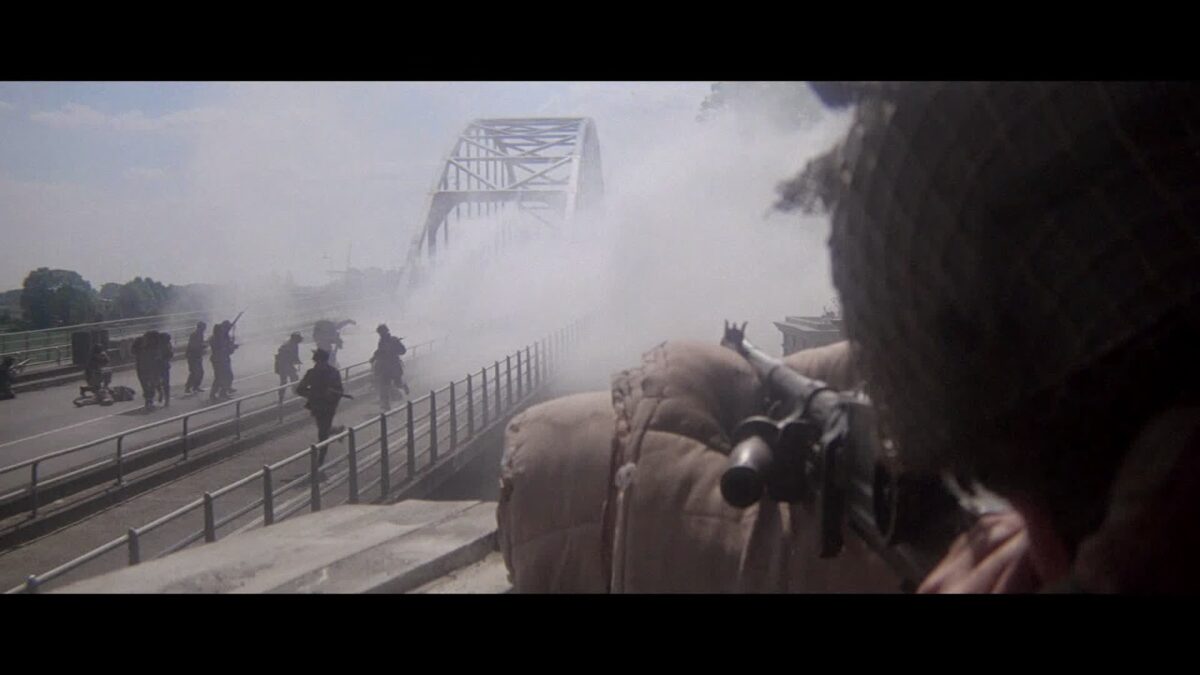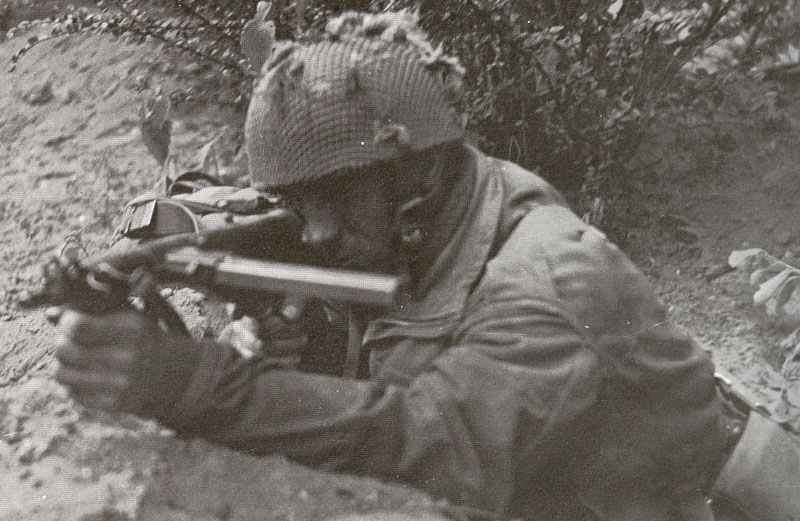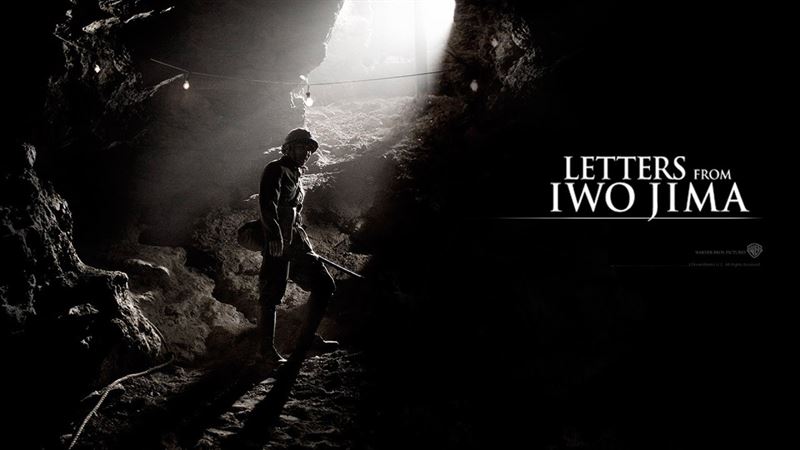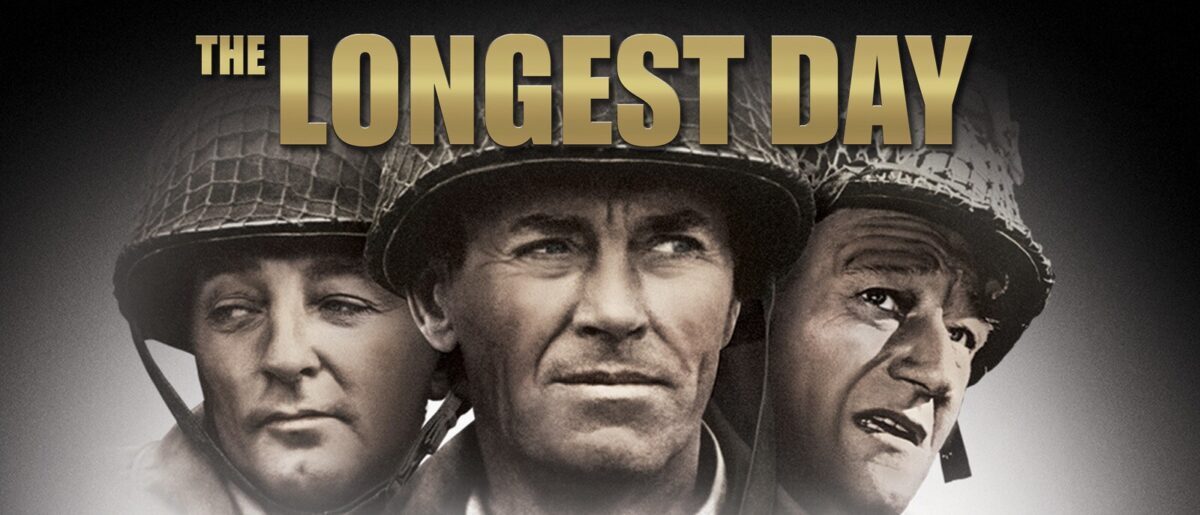A Bridge Too Far: A Gripping War Film with an All-Star Cast.

The Plot:
A Bridge Too Far (from 1977) begins with the strategic planning of Operation Market Garden, a daring Allied mission to secure several key bridges in the Netherlands and pave the way for a swift advance into Germany. The film introduces a multitude of characters, each with their own unique role to play in the operation. From the brilliant but ambitious British General Montgomery (played by Edward Fox) to the courageous American paratrooper Colonel Robert Stout (played by James Caan), the audience is quickly immersed in the high-stakes world of wartime decision-making.
As the operation unfolds, the film expertly weaves together multiple storylines, showcasing the perspectives of both the Allied forces and the German defenders. The audience witnesses the intense battles, the sacrifices made by soldiers on both sides, and the devastating consequences of failed communication and flawed intelligence. The film’s narrative is masterfully paced, building tension with each passing scene and leaving viewers on the edge of their seats.
The Characters:
One of the film’s greatest strengths lies in its ensemble cast, which includes some of the most talented actors of the time. From Sean Connery as the charismatic Major General Roy Urquhart to Anthony Hopkins as the dedicated Lieutenant Colonel John Frost, each actor brings depth and authenticity to their respective roles.
One standout performance is delivered by Michael Caine, who portrays Lieutenant Colonel J.O.E. Vandeleur. Caine’s portrayal of Vandeleur, a calm and composed officer leading a crucial attack on a bridge, showcases the character’s unwavering determination and leadership skills. His performance is both captivating and emotionally resonant, drawing the audience further into the film’s narrative.
The Cinematography:
Visually stunning, A Bridge Too Far captures the harsh realities of war with remarkable precision. The film’s cinematography, led by director of photography Geoffrey Unsworth, expertly captures the sprawling landscapes of the Netherlands and the chaotic nature of battle. From the breathtaking aerial shots of paratroopers descending from the sky to the gritty close-ups of soldiers engaged in combat, every frame is meticulously crafted.
The attention to detail extends beyond the action sequences, with the film also highlighting the devastating impact of war on civilian populations. The camera captures the desolation of war-torn towns and the anguish of displaced families, serving as a poignant reminder of the human cost of conflict.
The Legacy:
A Bridge Too Far stands as a testament to the bravery and sacrifice of those who fought in World War II. It serves as a reminder of the complexities and tragedies of war, highlighting the importance of effective communication, meticulous planning, and the need for adaptability in the face of unforeseen challenges.
Decades after its release, the film continues to captivate audiences with its gripping storytelling, outstanding performances, and stunning visuals. A Bridge Too Far remains a timeless war film that not only entertains but also educates, shedding light on a pivotal moment in history and honoring the individuals who lived through it.
One of the main storylines focuses on Lieutenant Colonel John Frost, played by actor Anthony Hopkins, who leads a group of British paratroopers tasked with capturing and holding the Arnhem Bridge. Frost and his men face overwhelming odds as they find themselves outnumbered and outgunned by the German forces. The film highlights the bravery and resilience of Frost and his men as they fight against all odds to hold their ground.
Another storyline follows a group of American paratroopers, led by Captain Mike Powell, portrayed by actor Tom Hanks. Powell’s unit is responsible for securing a crucial bridge further down the river. However, they face their own set of challenges as they encounter strong German resistance and are forced to adapt their tactics to survive.
Meanwhile, the film also delves into the experiences of the Dutch resistance fighters, who play a vital role in aiding the Allied forces. These brave individuals risk their lives to gather intelligence, sabotage German operations, and provide support to the paratroopers. Their contribution to the overall mission is crucial, and the film pays tribute to their courage and determination.
As the battle rages on, the film explores the toll that war takes on the soldiers, both physically and emotionally. We witness the exhaustion, fear, and grief that they endure as they face constant danger and witness the loss of their comrades. The film also delves into the moral complexities of war, as the characters are forced to make difficult decisions that could mean life or death for themselves and others.
Ultimately, the operation fails to achieve its objectives, and the film concludes with a poignant reflection on the high cost of war. Despite the setbacks and the devastating loss of life, the film leaves the audience with a sense of admiration for the bravery and sacrifice of the soldiers involved in Operation Market Garden.
The Cast and Performances:
A Bridge Too Far boasts an impressive ensemble cast, featuring some of the finest actors of the time. The film includes notable performances by Sean Connery, Anthony Hopkins, Michael Caine, Gene Hackman, and Robert Redford, among others. Each actor brings depth and authenticity to their respective roles, capturing the essence of the characters they portray.
Sean Connery delivers a powerful performance as Major General Roy Urquhart, the commander of the British 1st Airborne Division. His portrayal of a determined and resilient leader is both compelling and believable. Connery’s commanding presence on screen, combined with his impeccable delivery of dialogue, makes him a standout in the film.
Anthony Hopkins shines as Lieutenant Colonel John Frost, who leads the British forces in the battle to hold the Arnhem Bridge. Hopkins’s ability to convey both strength and vulnerability makes his character particularly memorable. Through subtle nuances in his performance, Hopkins captures the inner turmoil and emotional weight that Frost carries throughout the operation.
Michael Caine delivers a standout performance as Lieutenant Colonel J.O.E. Vandeleur, showcasing his versatility as an actor. Caine effortlessly transitions between moments of intense action and quiet reflection, bringing depth and complexity to his character. His portrayal of Vandeleur’s unwavering determination and unwavering loyalty to his men is truly captivating.
Gene Hackman brings a sense of authority and gravitas to the role of Major General Stanislaw Sosabowski, the Polish commander who questions the feasibility of the operation. Hackman’s commanding presence and commanding presence on screen make him a perfect fit for the role. His performance adds an additional layer of tension and conflict to the film.
Robert Redford offers a charismatic portrayal of Major Julian Cook, an American officer involved in the operation. Redford’s natural charm and charisma shine through in his performance, making Major Cook a likable and relatable character. Redford’s ability to capture the complexities of Cook’s role in the operation adds depth and nuance to the overall story.
These performances, along with the rest of the cast, contribute to the film’s authenticity and emotional impact. The actors successfully convey the physical and emotional toll of war, allowing the audience to connect with the characters on a deeper level. Their performances bring the story to life, making A Bridge Too Far a truly memorable and impactful film.

The Cinematography and Direction:
A Bridge Too Far is visually stunning, thanks to the exceptional cinematography by Geoffrey Unsworth. The film captures the grandeur of the Dutch landscape, as well as the chaos and destruction of the war. The battle scenes are meticulously choreographed and shot, immersing the audience in the intensity and brutality of the conflict.
Unsworth’s cinematography is a true work of art, with each frame carefully composed to enhance the storytelling. The sweeping shots of the Dutch countryside create a sense of scale and magnitude, emphasizing the vastness of the operation. The use of natural lighting adds a sense of authenticity to the scenes, making the audience feel as if they are right there in the midst of the action.
Furthermore, Unsworth’s attention to detail is evident in every shot. From the way he captures the smoke and debris in the air during battle sequences to the close-ups of the soldiers’ faces, his cinematography adds depth and emotion to the film. The audience can see the fear, determination, and exhaustion etched on the faces of the characters, making their experiences all the more real and relatable.
Richard Attenborough’s direction is masterful, as he skillfully balances the epic scale of the operation with the intimate stories of the individual soldiers. He effectively conveys the chaos and confusion of war, while also highlighting the personal sacrifices made by the men on the front lines. Attenborough’s attention to detail and his ability to bring out the best in his cast make A Bridge Too Far a truly memorable film.
Attenborough’s direction is characterized by his ability to create a sense of tension and suspense throughout the film. He expertly builds up to the climactic battle scenes, gradually increasing the stakes and the sense of impending doom. The audience is kept on the edge of their seats, eagerly anticipating the outcome of the operation.
In addition, Attenborough’s direction shines in his portrayal of the individual soldiers. He takes the time to develop each character, giving them their own unique personalities and motivations. This allows the audience to become emotionally invested in their stories, heightening the impact of their triumphs and tragedies.
Attenborough’s talent for storytelling is further showcased in his ability to seamlessly weave together multiple storylines. Despite the large ensemble cast, each character’s journey is given proper attention and significance. Attenborough ensures that no story is overshadowed, creating a cohesive narrative that keeps the audience engaged from start to finish.
In conclusion, the cinematography by Geoffrey Unsworth and the direction by Richard Attenborough elevate A Bridge Too Far to a cinematic masterpiece. Their attention to detail, ability to capture the essence of war, and talent for storytelling make the film a truly unforgettable experience. Whether it’s the breathtaking visuals or the emotional depth of the characters, A Bridge Too Far is a testament to the power of great cinematography and direction in filmmaking.
Watch the full movie here:
The Historical Accuracy:

One of the strengths of A Bridge Too Far is its commitment to historical accuracy. The film meticulously recreates the events of Operation Market Garden, drawing from Cornelius Ryan’s extensively researched book. While some characters and events have been fictionalized for dramatic purposes, the overall depiction of the operation is faithful to the historical record.
The film captures the complexities and challenges faced by the Allied forces, as well as the mistakes and miscommunications that ultimately led to the operation’s failure. It offers a nuanced portrayal of war, showing both the heroism and the human cost of military actions.
One aspect of the film’s historical accuracy that stands out is its attention to detail in the portrayal of the military equipment and uniforms used during the time period. From the tanks and artillery to the soldiers’ uniforms and gear, every effort has been made to recreate the look and feel of the World War II era. This attention to detail not only adds to the authenticity of the film but also helps immerse the audience in the historical setting.
Furthermore, the film’s commitment to historical accuracy extends beyond the visual elements. The dialogue and interactions between the characters reflect the language and mannerisms of the time. The scriptwriters have clearly done their research to ensure that the characters’ conversations are in line with the historical context.
In addition to the visual and linguistic accuracy, the film also accurately portrays the strategic decisions made by the Allied commanders during Operation Market Garden. The film highlights the ambitious nature of the operation and the risks involved, as well as the disagreements and tensions among the Allied leadership. By presenting these aspects of the operation, the film provides a comprehensive and realistic portrayal of the events.
Overall, A Bridge Too Far stands as a testament to the filmmakers’ dedication to historical accuracy. From the meticulous attention to detail in the visual and linguistic elements to the faithful portrayal of the operation’s complexities and challenges, the film succeeds in bringing the historical events to life. It serves not only as a gripping war film but also as a valuable educational resource for those interested in the history of World War II and Operation Market Garden.





